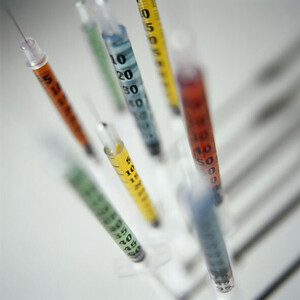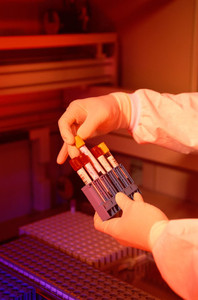The Chinese Government has targeted biotechnology as a ‘strategic pillar’ industry, and has pledged to spend 2 trillion yuan (Euros 213. 3 billion; US$308.5 billion) on science and technology in the next five years alone [1]. This has sent out a clear warning to the US Government that China aims to become the world’s pioneer in biotechnology in the short to medium term. In response, despite being under increasing pressure to reduce overall health expenditure, the US Government has resisted calls to cut funding and pledged US$ 32 billion to its National Institutes of Health biomedical research programme for 2012 [2].
China’s 5-year biotech investment fires clear warning to US
Biosimilars/News
|
Posted 26/08/2011
 0
Post your comment
0
Post your comment

Speaking at the 2011 International Conference for Bio-economy (Bio Eco 2011), Chinese State Councillor Liu Yandong said, ‘The Chinese Government will work to further combine biotechnology with economic development and with improving ordinary people’s livelihood. The development priorities of the 12th Five-Year Plan (2011—2015)—biopharmacy, bio-engineering, bio-agriculture and biomanufacturing—will bring benefits to Chinese people.’
During this time, 20 billion yuan (Euros 2.16 billion; US$ 3.12 billion) will specifically be spent on innovative medicine, the cultivation of new varieties of genetically modified organisms, and on the prevention and control of viral hepatitis and other infectious diseases. It is easy to see why biotechnology has been prioritised in China, with figures suggesting that in this 5-year period alone, it is expected to generate 1 million jobs, extend people's life expectancies by one year and reduce the infant mortality rate to 12% [2].
The Chinese biotech focus has already attracted leading investors from both China and the US. In April 2011, Ascletis Inc., a US-China specialty life sciences venture focused on cancer and infectious disease therapeutics, launched its operations in Hangzhou, China, having raised US$100 million in private equity funding from China and the US [3].
Big Pharma, too, has not been slow to see China’s potential. In 2009, Novartis announced it would invest US$ 1 billion in research and development in China over the next five years, including a significant expansion of the Novartis Institute of BioMedical Research in Shanghai, China. Novartis also invested US$250 million to build a new global technical center in Changshu, China, to develop and manufacture active pharmaceutical ingredients. Earlier this year, it also expanded its presence in the Chinese vaccine market by acquiring an 85% stake in Zhejiang Tianyuan Bio-Pharmaceutical Co Ltd, one of the largest private vaccine companies in China [4].
Similarly, Pfizer, which has been in China since 1980, has identified that partnerships with the Chinese Government will form a critical part of its expansion, and says it aims to build a stronger position in vaccines and biological medicine [4].
Related article
AutekBio to build ‘Asia’s largest biologics contract manufacturing organisation’ in China
References
1. Wang Yu and Li Xiang. China placing priority on biotechnology [cited 2011 August 26]. Available from: www.chinadaily.com.cn/bizchina/2011-06/28/content_12790544.htm
2. National Institutes of Health. Office of Budget; [cited 2011 August 26]. Available from: officeofbudget.od.nih.gov/
3. US-China Based Ascletis, Inc. Raises $100 Million from Private Chinese Investors for Specialty Therapeutics Venture. Ascletis Inc; [cited 2011 August 26]. Available from: www.ascletis.com/n04062011.html
4. Ariel Tung. Alliances form in growing pharmaceutical market [cited 2011 August 26]. Available from: www.chinadaily.com.cn/bizchina/2011-08/03/content_13043302.htm
Research
Reaching ESG goals in pharmaceutical development
What is the future for the US biosimilar interchangeability designation
General
Samsung Bioepis wins Pyzchiva case; Regeneron patent rulings threaten foreign biosimilars
Chinese biosimilars go global: growth, partnerships, and challenges
EMA recommends approval for four biosimilars targeting three therapies

Biosimilars/News Posted 10/10/2025
FDA approves first interchangeable rapid-acting insulin biosimilar, Kirsty

Biosimilars/News Posted 03/10/2025
The best selling biotechnology drugs of 2008: the next biosimilars targets







Post your comment